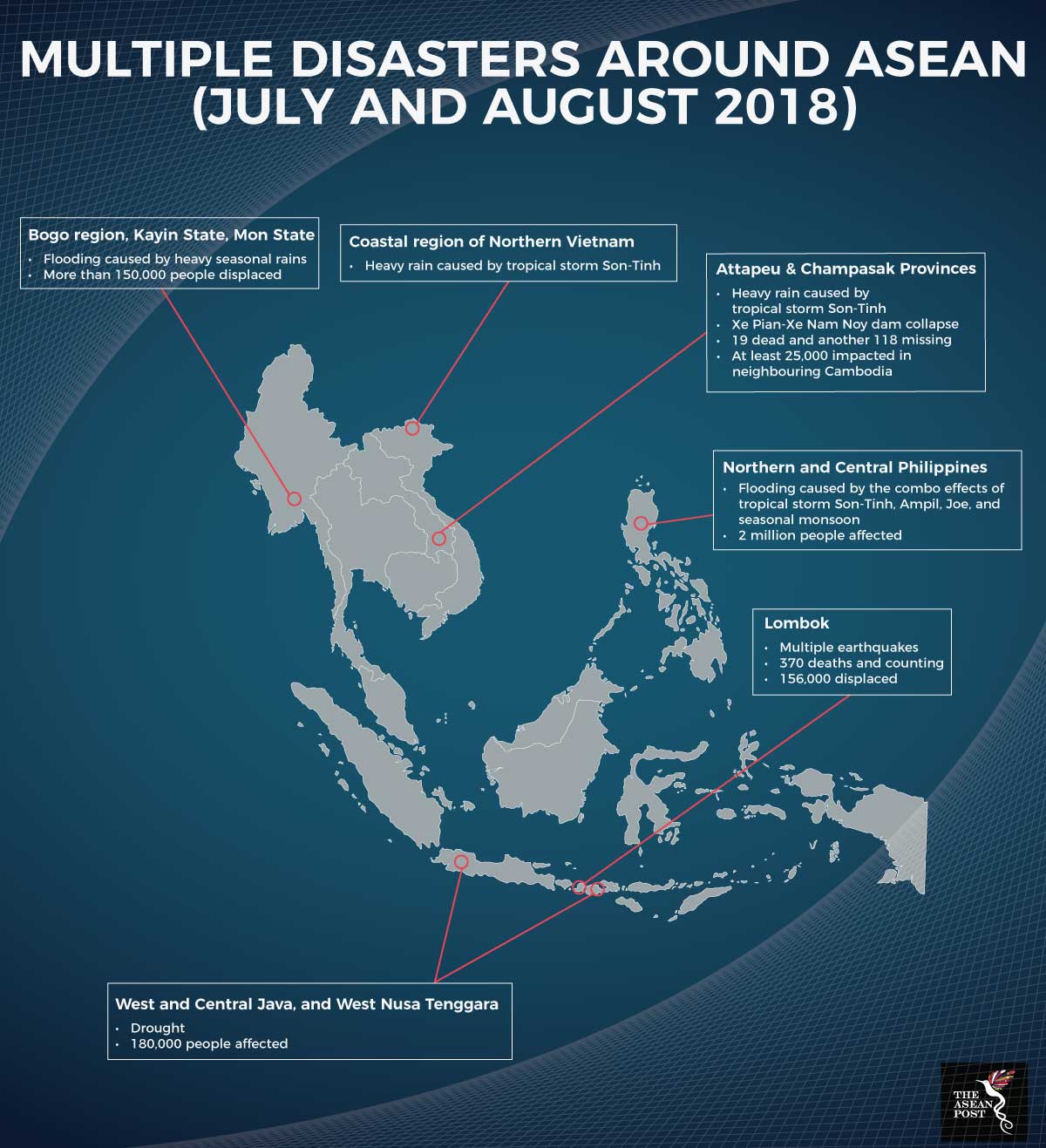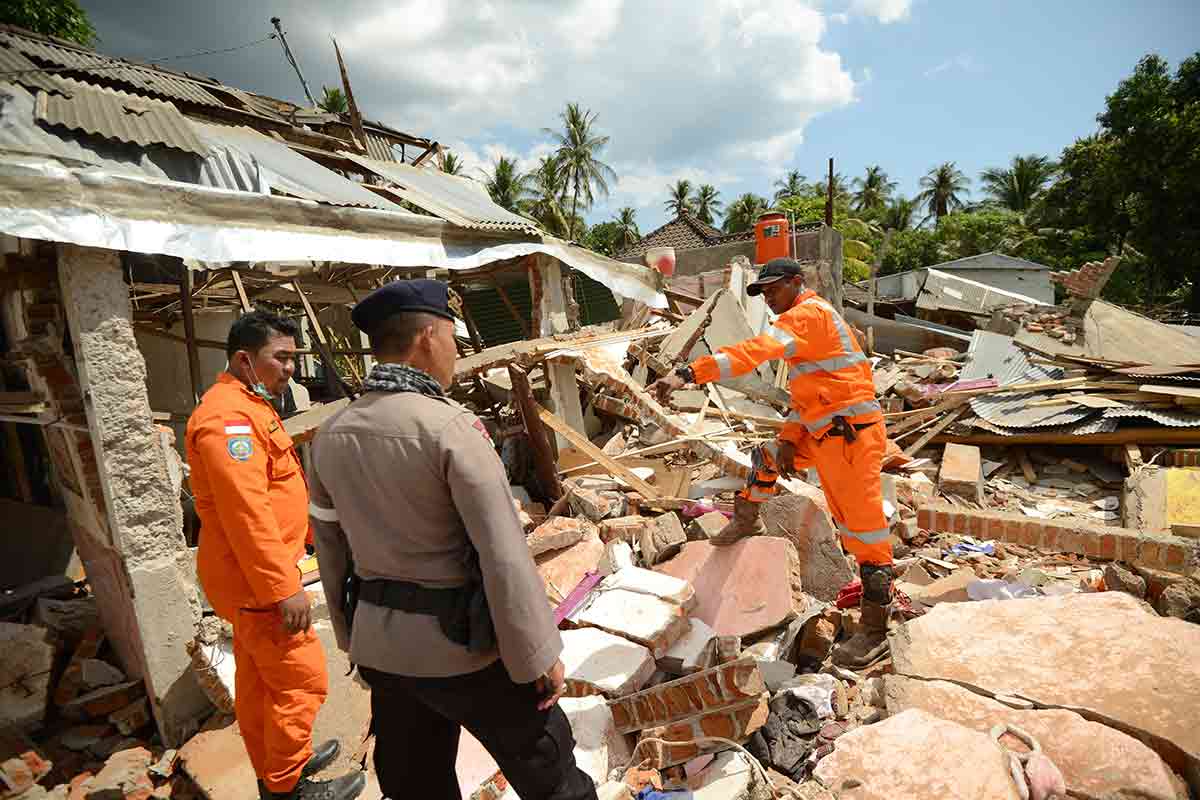On 29 July, a magnitude 6.4 earthquake took place on the Indonesian island of Lombok, killing 20 and injuring hundreds. The July earthquake triggered incidents of landslide on Mouth Rinjani, causing more than 1,200 hikers to be trapped and needing to be rescued. Following the earthquake, the Indonesian Agency for Meteorology, Climatology and Geophysics recorded 276 moderate aftershocks of 5.0 to 5.5 magnitude.
A week later, Lombok was again rocked, this time by a magnitude 7.0 earthquake, killing 350 people, injuring more than 1,500 people, and displacing another 156,000. With many more remaining unaccounted for, it is feared that the body count will increase. Chaos reigned and cases of lootings have been reported as store owners abandoned their shops. Displaced and traumatised by the massive upheaval, more than 156,000 people in Lombok have been forced to spend nights in makeshift shelters. The ensuing tremors have yet to cease, with more than 700 aftershocks registered.
Playing catch up
Lombok is not the only place in Southeast Asia currently affected by natural disasters. In the last two months, a trail of disastrous events has killed hundreds, displaced communities and suspended economic activities across the region. While Lombok is overwhelmed by the geological disaster, other areas in the region are under a siege of the hydrometeorological kind.
In Myanmar, heavy seasonal rains since mid-July have caused severe flooding in eight states across the country. The worst affected areas are the Bago region, Kayin State and Mon State. More than 150,000 people have been displaced since 9 July and 151 evacuation centres are in operation. People forced to evacuate their homes are seeking refuge in monasteries and public buildings such as schools or staying with relatives and host families.
In the same month, tropical storm Son-Tinh, also known as tropical storm Henry in the Philippines, wreaked havoc along its trajectory as it drifted from the Philippines westward, first making landfall in Hainan and then the coastal region of northern Vietnam. In the Philippines, the combo effects of Son-Tinh, Ampil and Joe, amplified by the seasonal monsoon, have caused massive flooding across 21 provinces in northern and central Philippines, affecting more than two million people.
Son-Tinh- induced heavy rainfall also caused major flooding in the Laotian provinces of Attapeu, Savanhnakhet, Khammouane, Xayabouli, Bolikhamxay, Luangprabang, Bokeo, Sekong, Xiengkhoang and Oudomxay. On 24 July, the heavy rain triggered the collapse of an under-construction saddle dam of the Xe Pian-Xe Nam Noy hydropower project, unleashing some five billion cubic metres of water on 13 villages downstream in the districts of Champasak and Attapeu, both sharing their border with Cambodia. Six of the affected villages with 7,095 residents were “100 percent affected”. The death count stands at 19, while another 118 remain missing.
The trail of calamities continues south along the Mekong river, where severe flooding threatens communities and their source of livelihood, inundating paddy fields and drowning livestock. Downstream from Attapeu on the Cambodian side, the flood from the collapsed dam forced an estimated 25,000 people to evacuate to safer ground. With inoperative infrastructure, ongoing assessments and inaccessible areas, a full picture of the disaster has yet to emerge.
While many areas within the region are challenged by the heavy deluge, some have been ravaged by a lack of water. The disaster monitoring map by the ASEAN Coordinating Centre for Humanitarian Assistance on Disaster Management (AHA Centre) is peppered with drought-impacted areas in West and Central Java, as well as in West Nusa Tenggara.

Sources: Various
ASEAN in action
In Lombok, reports have surfaced that rescuers in the affected areas are hampered by the lack of heavy equipment, with some of them having to dig victims out from under the rubble with their bare hands. Lacking medical supplies, food, and clean water, local authorities have appealed for more medical personnel and basic supplies. In the wake of the disaster, observers cannot help but question if enough aid and assistance are being sent to the affected communities and if the various national and local governments are equipped to handle emergencies within their boundaries.
Behind the scenes, at the regional level, the AHA Centre is closely monitoring the situation of each event. Discussions are being carried out between the national disaster management organisations (NDMOs) of ASEAN member countries through the Web-based Emergency Operations Centre (EOC). The execution of various AHA mechanisms can be seen in the support given at the various impacted areas. As a regional bloc, ASEAN can also provide bilateral Government-to-Government assistance.
“The affected NDMOs can provide updates on the needs of the affected Member State, while the other neighbouring countries can share the types of available and deployable resources. It does not always come in the form of relief items. It can also be facilitated in the terms of expertise and human resources or personnel support,” said the AHA in an email response to The ASEAN Post.
As for the flooding in Lao PDR, the AHA Centre has been providing information management and mapping, logistic management, relief items, and advisory to the Laotian NDMO, under the Ministry of Labour and Social Welfare. Relief items, including a Mobile Storage Unit as a temporary warehouse for incoming relief items, rescue boats, hygiene kits, and mosquito nets, have been flown in from the Disaster Emergency Logistic Stockpile of ASEAN (DELSA). The AHA Centre has also deployed an In-Country Liaison Team (ICLT) to help establish and maintain the EOC in Vientiane.
In Myanmar, the AHA Centre is providing 12,000 locally procured portable solar lanterns for distribution to the affected population in rural areas where grid connections are limited. While the ICLT concluded its activity on 4 August, remote support in terms of situation analysis and updates are on-going.
For the earthquakes in Lombok, the AHA Centre is coordinating closely with the Indonesian NDMO and seeking its advice on the kind of support required. An ICLT personnel has been deployed to help conduct a rapid assessment at ground zero. For the moment, the emergency response is still within the national responding capacity and any offer of international assistance is advised to seek official approval.
Trial by fire
While the AHA Centre and its national partners have practiced and rehearsed many times how to respond in a multiple disaster scenario under the ASEAN Regional Disaster Emergency Response Simulation Exerise (ARDEX), this is the first time that ASEAN through the AHA Centre has had to activate multiple responses to disasters at the same time.
“Whenever there is no medium or large-scale disaster, the disaster management actors work together to develop a preparedness strategy. Our ARDEX normally does not use a single-disaster scenario, but a scenario of one disaster after another. The issue is about planning, planning, planning, and exercise,” explained the AHA Centre.
The opportunity to respond to multiple disasters such as this will not only help develop the AHA Centre’s capabilities, but also help to strengthen partnerships and collaborations with external humanitarian actors. As they monitor the development of the various disasters currently ravaging Southeast Asia, the commitment and close partnership within the bloc could mean the difference between life and death for ASEAN’s citizens.
